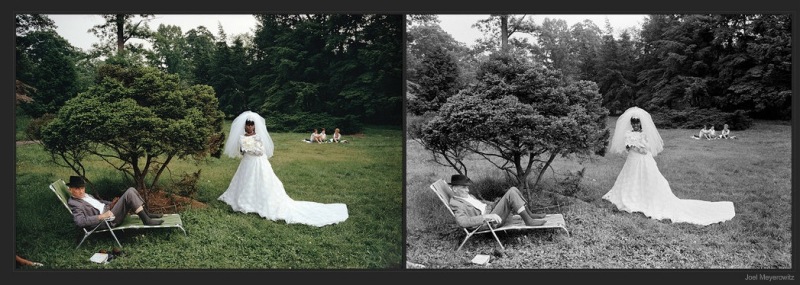Black and white seldom helps.
Joel Meyerowitz writes compellingly:
“From my first moments as a photographer — the very first roll of film, actually — I worked in color and believed in its potential. Why wouldn’t I? The world was in color! There was no question about what film to use and, besides, in that passionate first moment of discovering photography I wanted to see what I had made photographs of as fast as I could get them back from the lab.”
And while I find his color work as trite and banal as the monochrome meanderings of a clientless minority claiming art status for their black and white snaps, there’s no disagreeing with his sentiment.

Meyerowitz compares colors. © Joel Meyerowitz.
You can read more here.
These are hardly original thoughts. Eliot Porter put it far more eloquently when he had his color conversion decades earlier.
Monochrome is seldom justified, mainly used as a crutch to make something passable from something awful. The height of this pretentiousness is manifested in Leica’s Monochrome M body which – wait for it – delivers black and white images only from its digital sensor. Now you too can be Cartier-Bresson, as long as you can afford the $8,000 entry fee. And you still get no lens for that money. Ridiculous. What’s wrong with pressing the ‘Monochrome’ button in Photoshop?

Idiocy redefined. The ‘There’s one born every minute’ camera.
Back-ordered, needless to add.
Here’s a rare example of photography where only monochrome will do but, then again, this is the work of a very great photographer indeed.